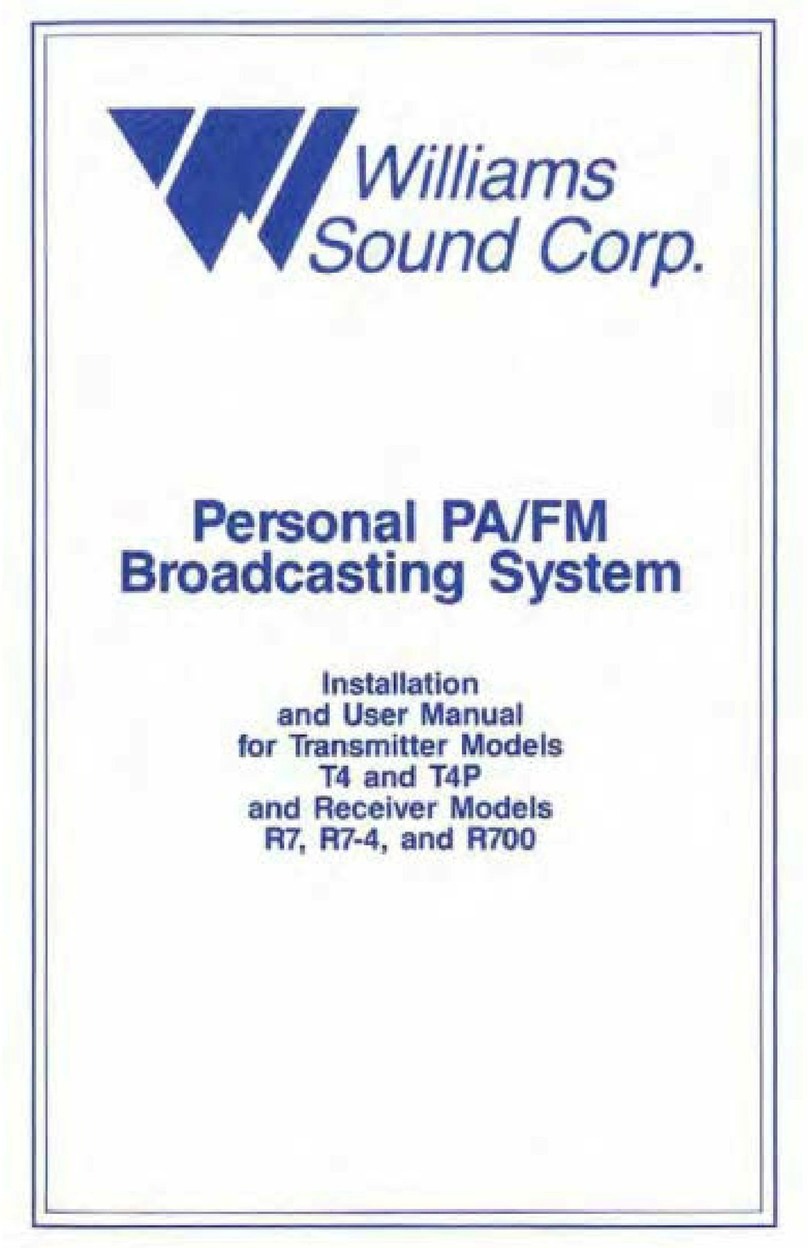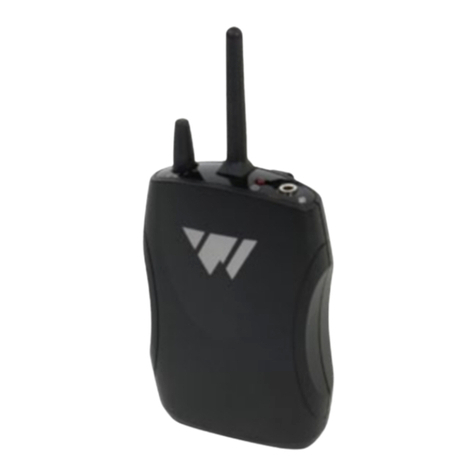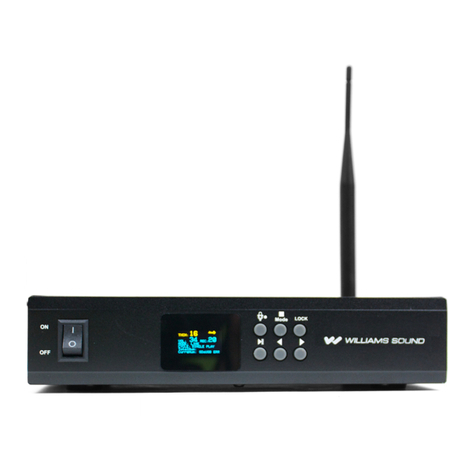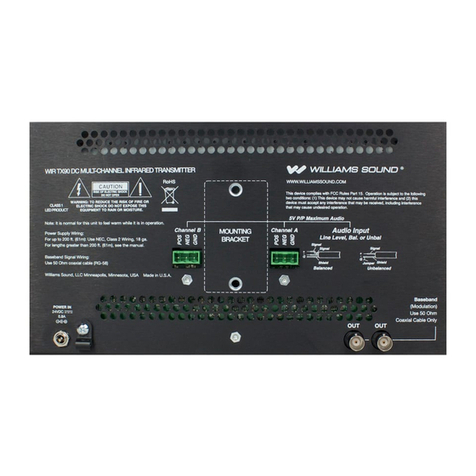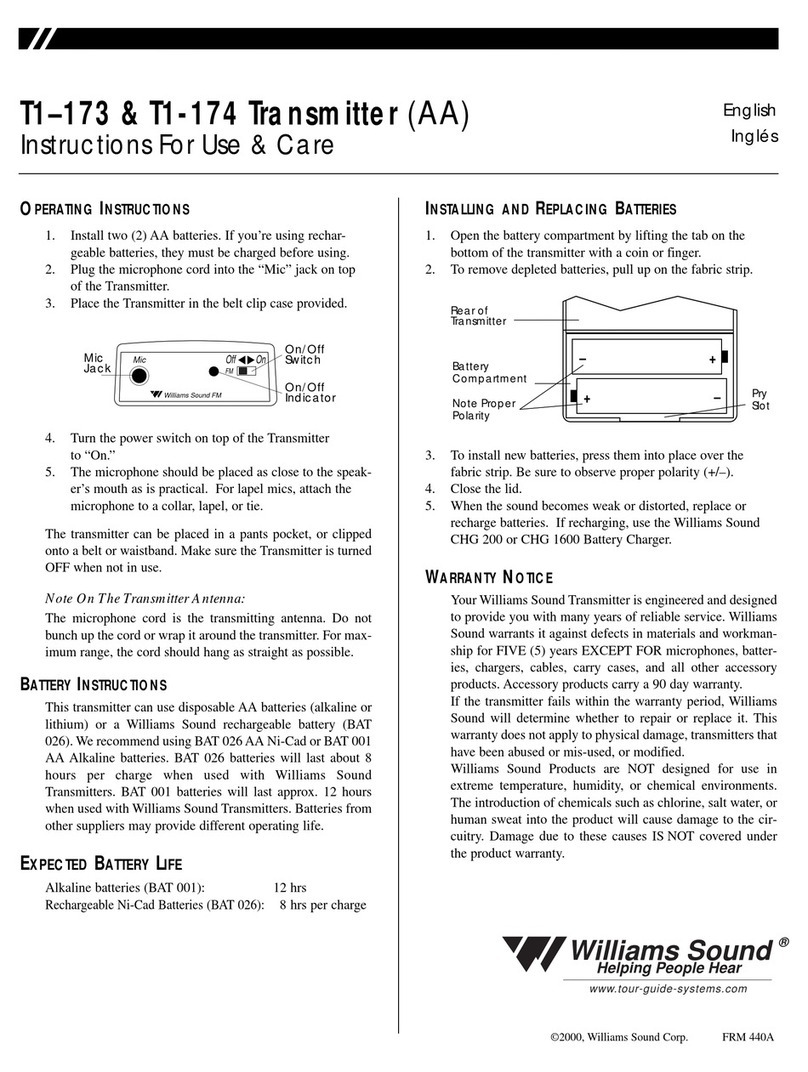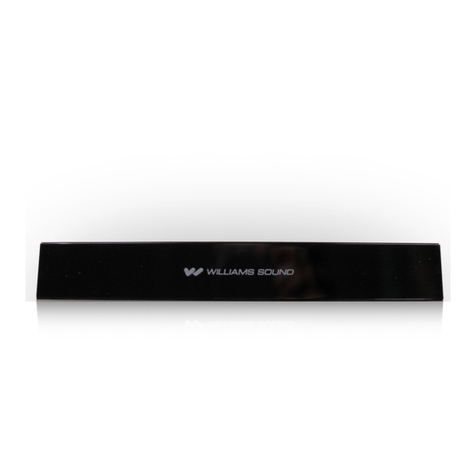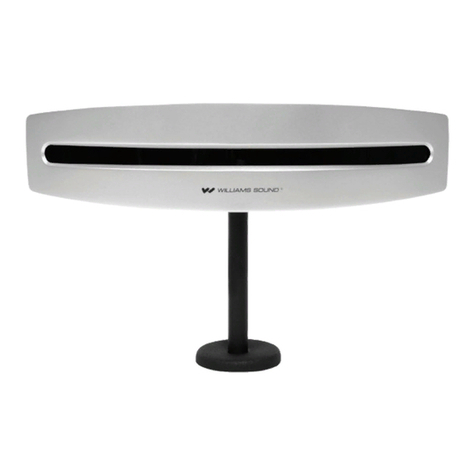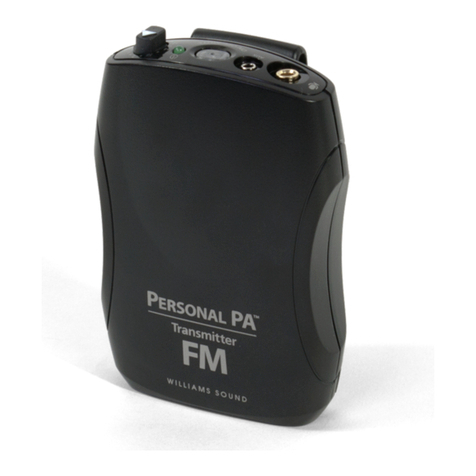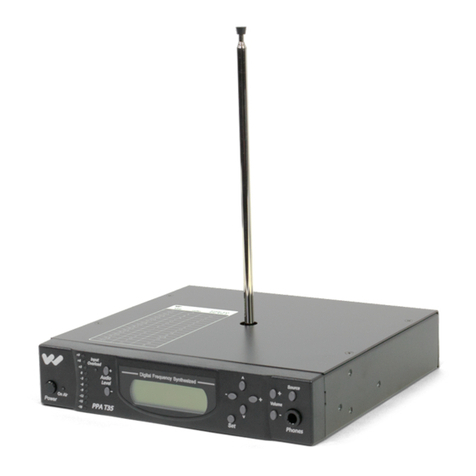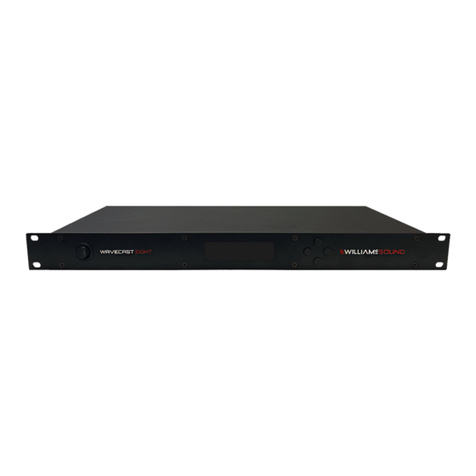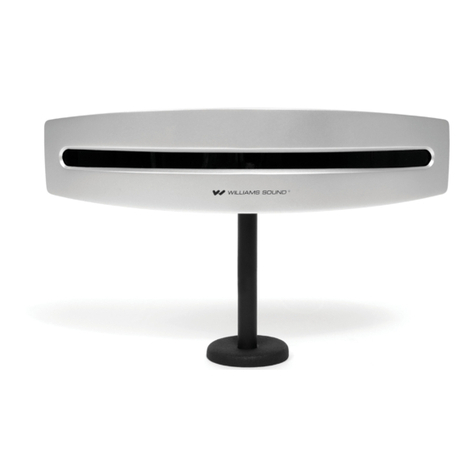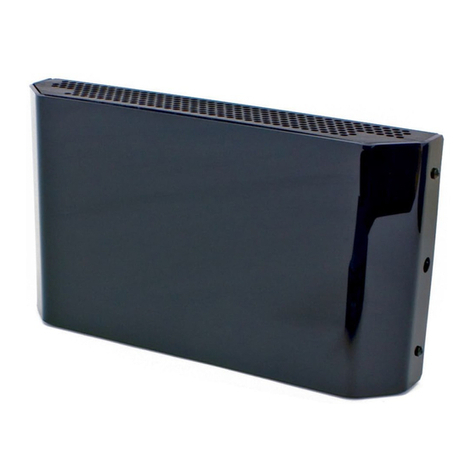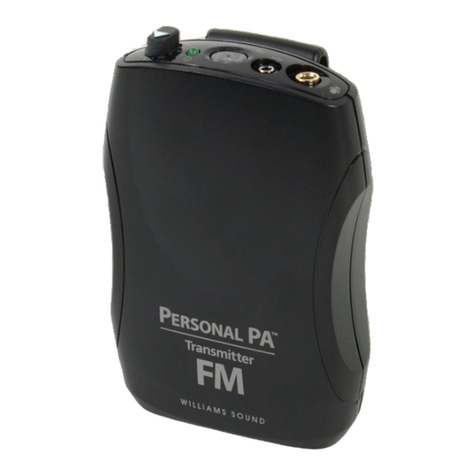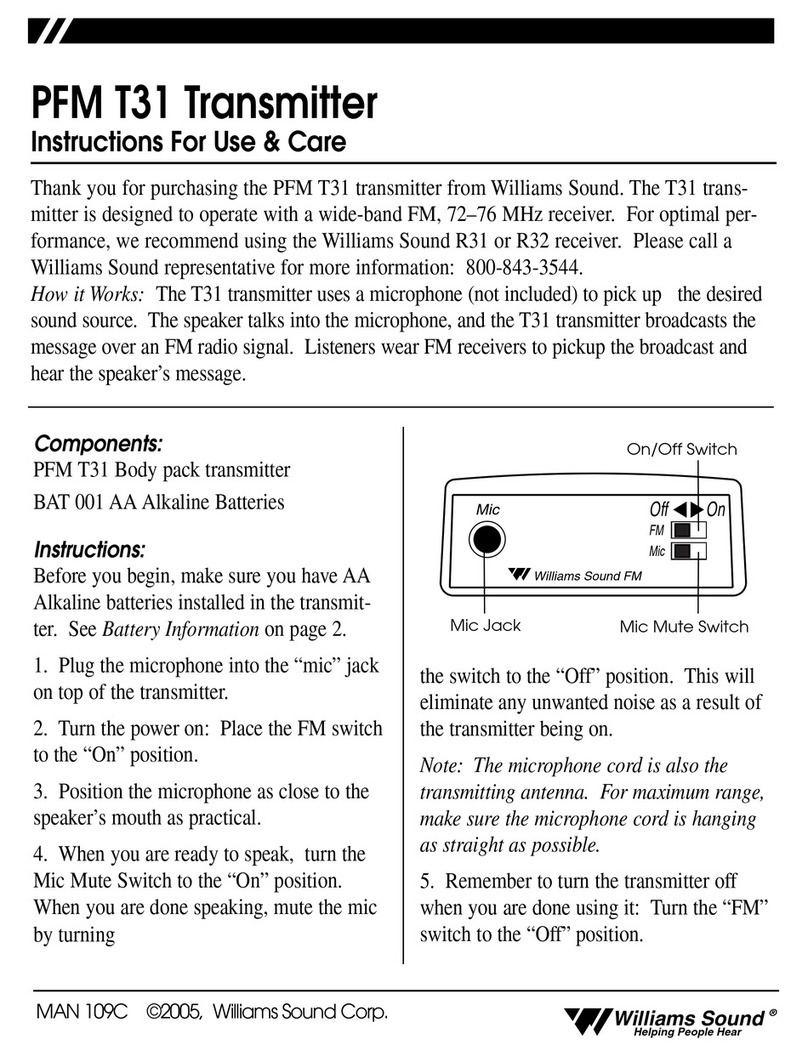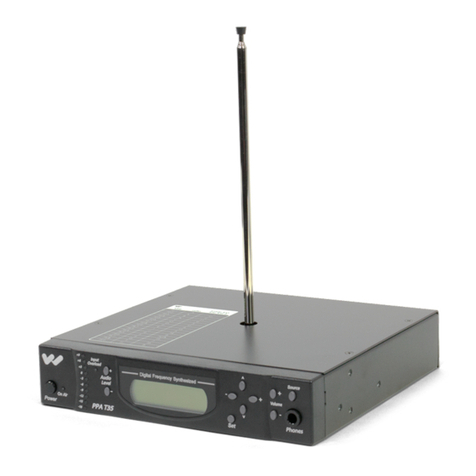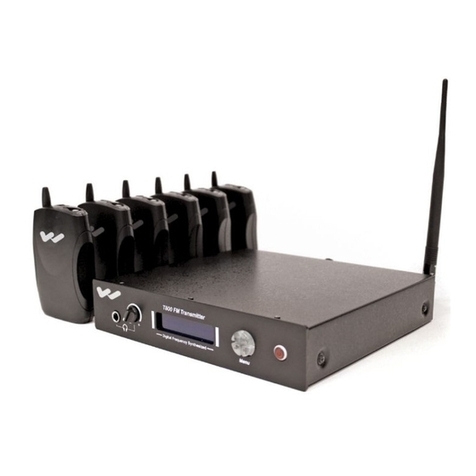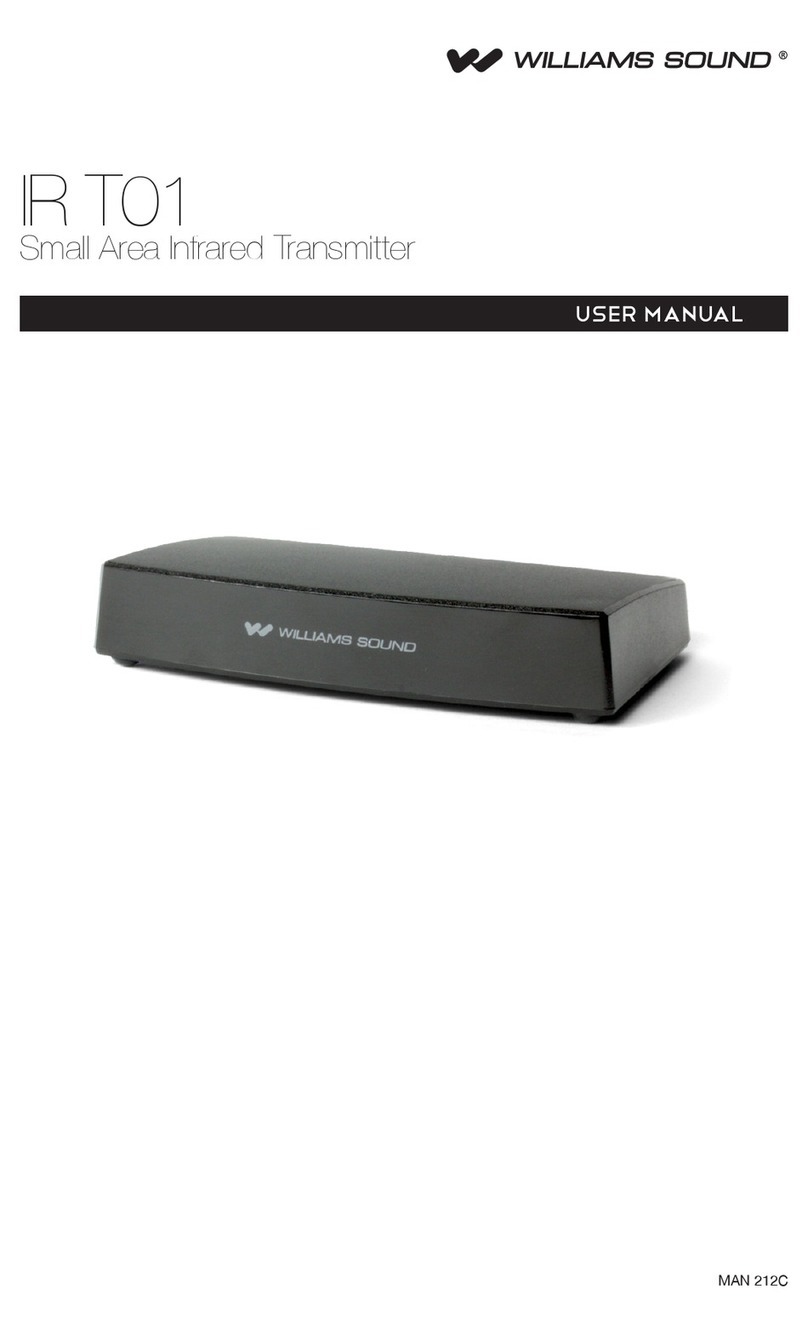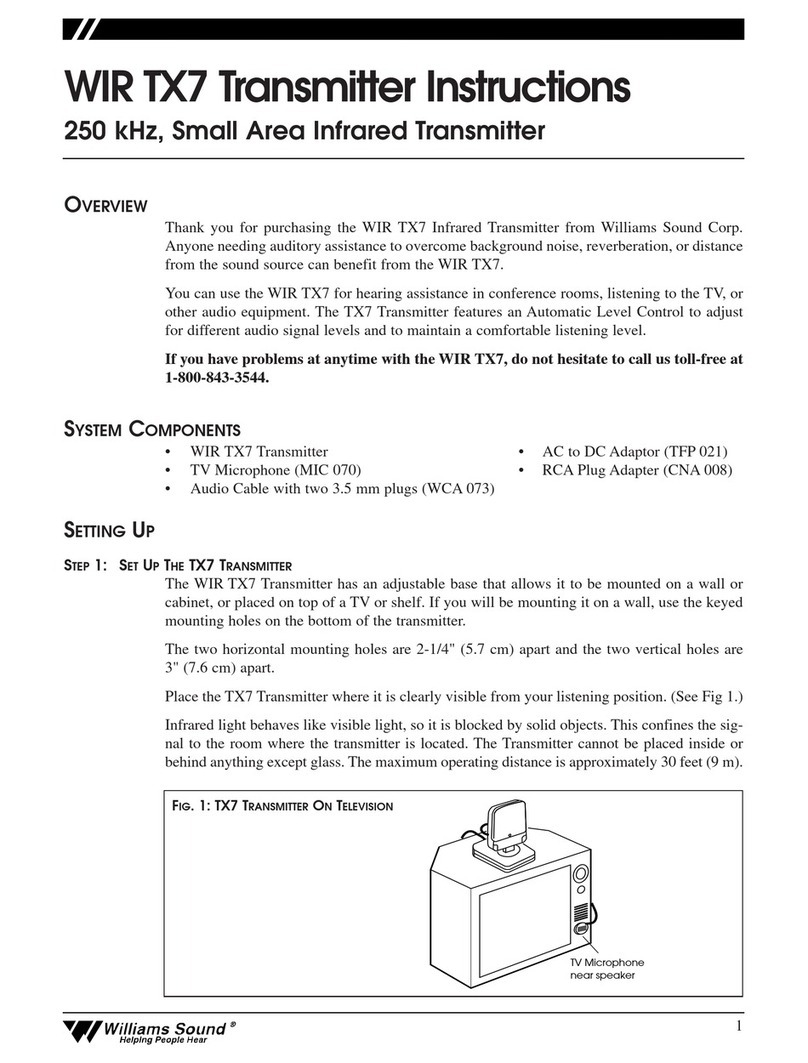
The coverage area may be aected by direct/indirect
sunlight, reflections on walls and room construction.
Reflections of the infrared light from walls, ceilings, and
floors may change these patterns.
Important: Remember to point the emitter towards the
listening audience.
Remember: Most objects block infrared light. The
transmitter cannot be concealed behind walls, glass,
curtains, etc.
These patterns are the direct radiation pattern. The infrared
radiation does not drop to zero outside the illustrated
patterns; it decreases. It still may be usable at a greater
distance, depending on the receiver sensitivity and the
reflective characteristics of the room.
Do not paint the front face of the IR E4.
Network Cable Connection
The Ethernet port can be used to connect the IR M1 to a
local network. A network connection is required to access
the IR M1 webpage. The webpage is needed to configure
some device settings after the system is set up.
An Ethernet connection alone will not allow the Wi-Fi
broadcast features to work; a Wi-Fi connection must be
available on the network. A network connection is not
required for broadcasting over infrared.
Once a connection has been established, an IP address will
automatically be assigned to the IR M1. Device settings can
then be set via the web interface, including changing any
network settings.
NOTE: Most settings need to be set BEFORE connecting
audio sources.
Cable Connection to Emitters
The IR M1 can directly drive four emitters. Emitters repeat
the baseband signal, so any number of emitters can be
used. The modulator outputs CANNOT be split with CAT5e
splitters.
Determine the length of RJ-45 cable needed to reach from
the Emitter to the Modulator unit. For more information
on cabling, please read the full user manual (see “For
Additional Information” on page 2).
Audio Source Connections
The IR + transmitter will accept the following audio sources:
1. Balanced Microphone with or without 12 volt phantom
power (DIN 45596) on a 3-pin (XLR) connector.
2. Balanced/Unbalanced microphone with or without
phantom power on 1/4 inch (TRS) jack
3. Balanced/Unbalanced Line on a 3-pin (XLR) connector.
4. Balanced/Unbalanced Line on 1/4 inch (TRS) jack.
5. Dante on an RJ-45 jack (optional).
WARNING:
The IR + is not designed to accept 70 volt speaker
signals! This may result in damage to your system.
The sound source should come directly from the
system mixer or digital source as a low-level or unprocessed
signal.
For specific audio wiring information, please read the full
user manual (see “For Additional Information” on page
2).
Network Configuration
Network Settings can only be edited from the web interface.
An IP address will be automatically assigned to the IR M1
once an Ethernet cable has been connected to the device
and network connection found. Additional configuration
would need to be made through the web interface.
Web Control Interface
The IR M1 provides a web interface to manage the device
settings. These web pages can be accessed over either a
hardwired or wireless network connection with the Chrome
browser.
Changes take eect when applied or saved. Any updates
made through the front panel will show up on the web
interface once the current page has been navigated away
from, either by refreshing the page or going to a new page.
1. Open Chrome.
2. In the address bar of the browser, type in the IP
address of the IR M1 and hit Enter.
3. You should see the Login Page of the IR M1 and can
adjust settings from here.
4. For more information, please read the full user manual
(see “For Additional Information” on page 2).
For Additional Information
This manual is a quick start guide for getting your IR +
system up-and-running. It covers basic cable connection
and setup. Most features and customization options are not
documented in this manual.
For additional information, feature instructions, warranty
information and more, please download the full user
manual from the IR Plus product pages on Williams AV’s
website.
info@williamsav.com / www.williamsav.com
800-843-3544 / INTL: +1-952-943-2252
© 2020, Williams AV, LLC MAN 274A
